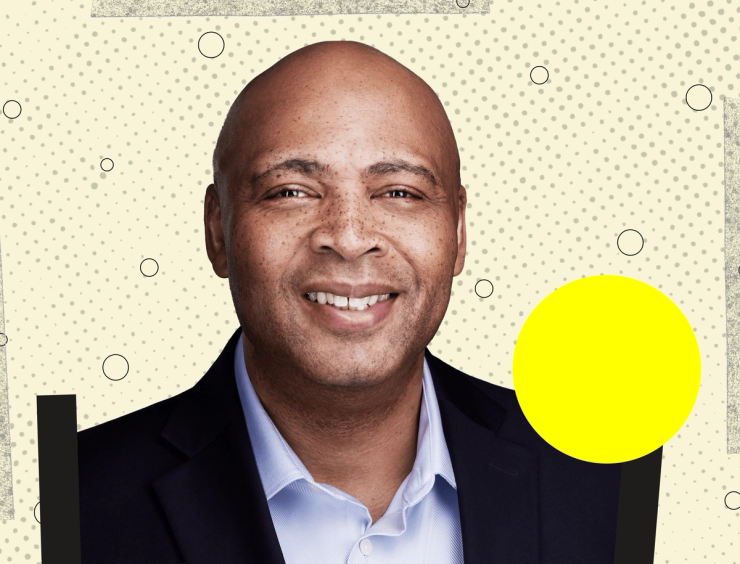The Signal Insight
C.H. Robinson is an $18 billion link in the global supply chain — the largest truckload broker in North America. Under Dave Bozeman, its CEO since 2023, the 120-year-old company is repositioning itself as what Deutsche Bank analysts called “an undervalued AI play.”
Bozeman’s career has included eight years at Caterpillar, five years in charge of Amazon’s transportation services arm, and a brief stint as vice president of Ford’s customer service division. But it began at Harley-Davidson in the 1990s, when the US motorcycle manufacturer was adopting the “lean” manufacturing methods pioneered by Toyota to combat competition from Japanese rivals.
He has applied those principles of continuous improvement to the Minnesota-based logistics group, and credits the approach with driving six quarters of growth that have outpaced its peers — despite a stock-sapping freight recession exacerbated by global trade tensions.
Bozeman pairs regular operating reviews that flag operations as green if they are on plan and red if they are missing their targets with “Gemba walks” — Toyota-style exercises in which he goes to the worksite to see what has gone awry.
At the same time, he says that rolling out AI technology to automate order-taking and to offer price quotes to customers in seconds has acted as “a radioactive spider,” “supercharging” its employees to drive steep productivity gains — including an 11% cut to headcount in the second quarter. The group says it has processed more than 3 million tasks using generative AI.
C.H. Robinson is now “a structurally different company,” Bozeman says. “We’ve done a transformation of a company to bring its swagger back.”
This interview has been condensed and edited for clarity.
Andrew Edgecliffe-Johnson: When you talk about the application of AI, what are you able to do that you could not before?
Dave Bozeman: Our business model is really an order-to-cash process. Being somewhat of a lean practitioner, I always look at things and see clean flow from order to cash. But in reality, it’s a very physical process; there’s friction on all of [the steps in the process]. And technology has provided us the opportunity to automate what were very manual tasks done by humans, driving a 35% productivity [improvement] since the end of 2022.
Your CFO talked on the last earnings call about decoupling headcount from volume. How do you do that?
Three things have allowed us to do it. One is a lean-based operating model that brings visibility to our problems. As I took over, I did a diagnosis. I’m trying to treat a business like a human being’s health: You don’t know how healthy it is until you scan it, and I scanned it. I came out with a few things within our company that were not healthy. One is, I felt that we admired problems versus being problem-solvers. We tended to admire problems for too long.
You just looked at them rather than figuring out the way through?
That’s right. And the second thing is, we didn’t innovate at a clock speed that I thought would generate a competitive advantage. And then, three, we didn’t have a culture that allowed people to fail fast and think freely. And those things all have to be addressed to really change that culture.
So they were celebrating the wins, but not mentioning the losses?
Like many companies do, we had to address that. When we launched the operating model in January 2024, it brought an immediate cadence. I’ve been doing it for many decades, but it’s very powerful when you can say, “We are no longer going to prosecute you, but we’re going to prosecute the problem, and by the way, we’re going to celebrate the red… because it’s an opportunity of discovery.”
So when a light flashes red on your dashboard, are you sending in a team to say, ‘Go discover what that problem is, and let’s find the opportunity for learning?’
Actually, we’ll have it led by myself and the CFO, which is a big thing. When you do a lean transformation, senior leadership has to be the teachers. One of the big failings that happens in a lean transformation is when senior management doesn’t take on that responsibility of leading and teaching. So we lead and teach at my senior leadership team.
I like to lead by example. And I “go to Gemba,” [even though] it’s a bit strange for people at first, [to see] the CEO sitting at the desk for two hours asking questions.
You have launched an AI-driven price quoting agent, but do you still have human oversight of the bigger quotes or the customers’ trickier questions?
We still have what we call a human in the loop, making sure the technology is doing what it should do and that it continues to learn. Now, the beauty of this is, over time, that gets disconnected and we have [fewer] humans in the loop, because the technology is now very stable and it’s learned. But we feel that it’s really important to have that human in the loop, because our logisticians are the best in the world, and keeping them atop that technology and watching it grow is a competitive advantage for us.
AI technology is available to everybody. How do you gain a lasting competitive advantage with it?
How you execute it is the difference. We feel we have a moat in how we’re executing that AI technology, [in our] domain expertise. Our engineers build our large language models and drive that technology. You can only imagine if we were working with [outside] firms and we [needed to make] changes, we would have to pick up the phone and ask them to make a change to what we were doing. Secondly, they would really have to understand our business. How long would that take?
Does this require a major step up in your spending on tech?
No, that’s the beauty of it, our spend right now is just level. This is why I say we’re an undervalued industrial AI play, because you have chipmakers, you have infrastructure players, you have hyperscalers, and then you have end users. We’re an end user of all of this technology, so we get all the models coming to us. What we’re doing is complicated, but we don’t have to have the absolute latest model, so the cost advantage that we can get in doing this is just incredible. And our cost is going down.
Are you saying that we’re now at a point where “essential economy” businesses like yours are now getting real-world benefit from AI?
That’s what we’re saying. And for us, it’s not about contemplating, it’s not about theorizing, it’s about doing and executing. We’re calling it out in our results, and it’s allowed us to challenge the big theories in the industry. Anyone can tell me, “You can’t do both, you can’t grow and expand margins.” We don’t agree to that premise because we have grown and expanded margins. [They say,] “You can’t disconnect headcount growth from volume growth.” We don’t agree with that premise. We have disconnected headcount growth from volume growth because technology, along with our operating system, has allowed us to do that. And it’s only going to keep going up and to the right.
Notable
- The weeks ahead of the US holiday season are usually hectic ones for supply chain businesses, but the latest transportation sector data suggests that the “great freight recession” that began in the aftermath of the pandemic is still dragging on.


